|
|
Sony Ericsson’s June Announcement – first impressions
On June 14 Sony Ericsson broke new ground in its history and inaugurated a bunch of handsets and accessories – every new product launch is getting bigger in scope. This event got more value also due to the fact that the company showcased its flagship for 2007-2008, namely the Sony Ericsson K850i. But let us take a closer look at every product and share our impressions.
Sony Ericsson K850i
The model codenamed Sofia was familiar to the community long before the official announcement actually took place – this is the flagship in Sony Ericsson’s range, released under CyberShot brand, which automatically implies its prowess in imaging department.
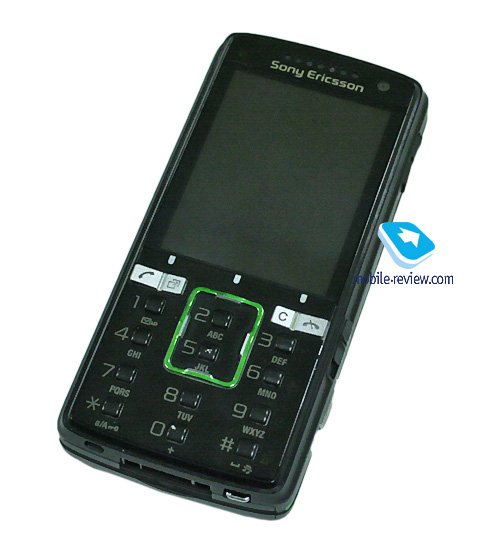
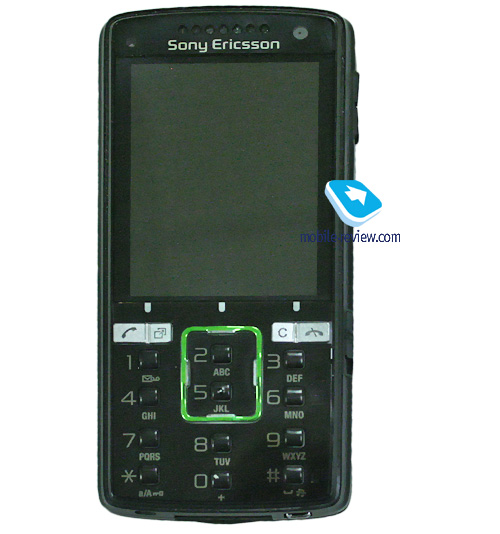
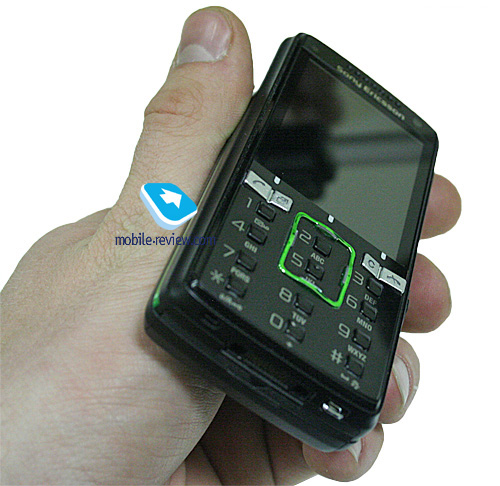
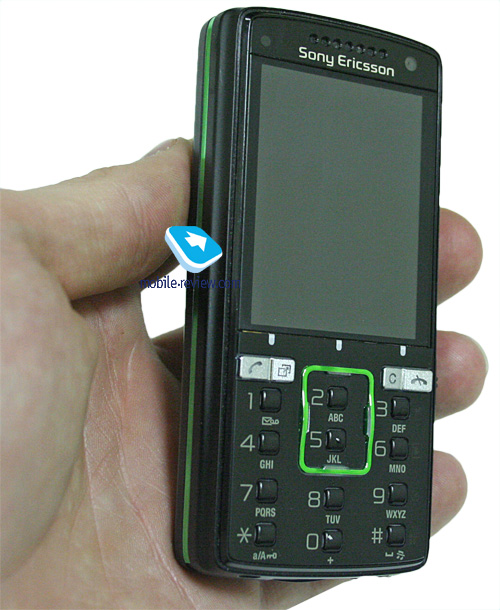
Though the handset’s design doesn’t follow up the company’s trademark style, having no rounded edge and thus looking more rectangular and somewhat sharp – this lends it a tubby feel. Both on pictures and in real life the handset has always seemed chunky to me, and at a glance I’ve always considered it to be bigger than the Sony Ericsson K800i. To my great surprise, this has been a mere optical illusion, because if you put it face to face with the K800i, you will definitely notice that the K850i’s casing is slimmer.
Dimensions – 102x48x17 mm, weight 118 grams. For comparison, the Sony Ericsson K800i measures up at 106x47x18 mm, weight 115 grams.
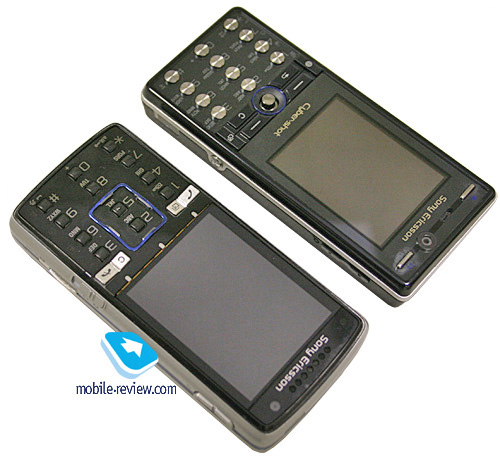

Not only do they try to dub the model as the maker’s flagship, but also highlight its design, specifically with the help of this motto - «State of the art performance». The K850i comes in a choice of two colors - Luminous Green and Velvet Blue, and in both cases the plastic the front face is coated in is black, while the navigation key’s rim and the side-mounted inset vary in color. Only the blue-painted edition features silver spines, and in its turn the rear is, so to say, clad in transparent plastic, which is uncommon for phones, although the same bottom layer is employed in some Sony’s digital cameras. The plastic quality is nothing that we would complain about; it especially looks good on the black casing edition, though the blue one also has some charm to it. But regardless of color scheme, the front fascia, finished in glossy plastic, easily picks up fingerprints and smudge.
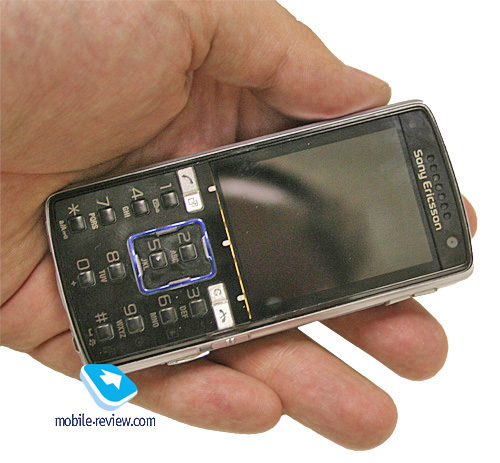
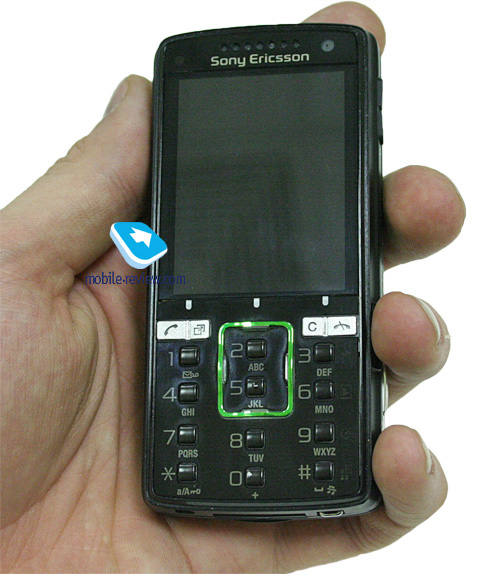
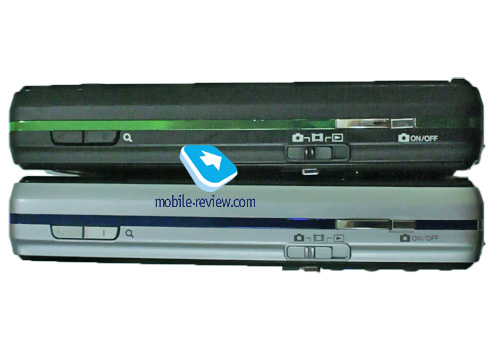
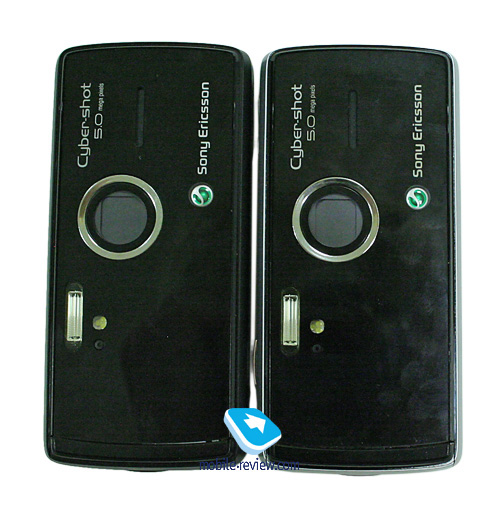
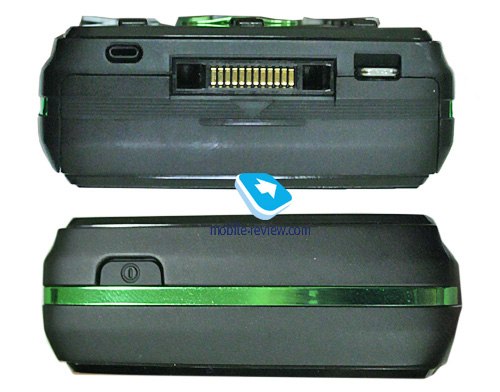
The handset’s keypad is designed in a not particularly common way – its keys are shaped as small squares similar to those the Sony Ericsson T650i has. Even though it might look clunky and fiddly, it proves to be quite easy to use. The navigation key is also pretty quaint, as it is placed alongside numeric buttons, but thanks to its protruding edges, it is a breeze to handle.
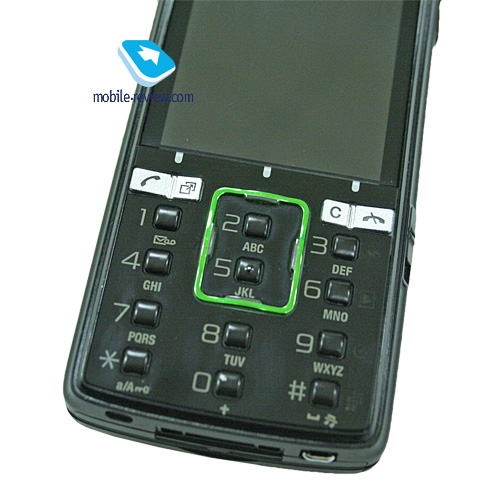
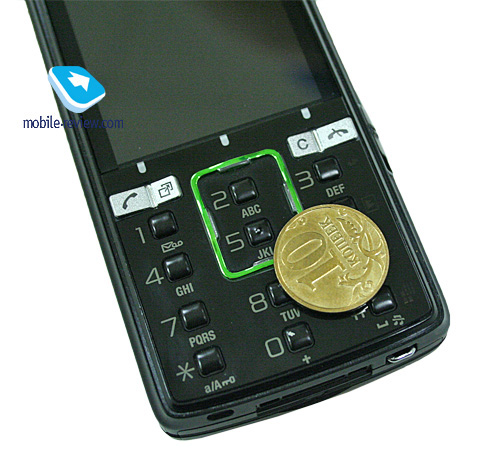
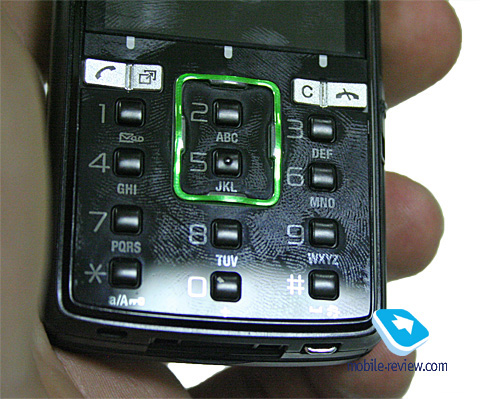
The back cover cannot be removed, instead look at the bottom end, where the standard Fast Port sits along with the battery hatch, which is quite novel, and under this cover are the SIM-card bed, microSD/M2 memory expansion slot, and also the battery compartment, where it gets locked with a latch.
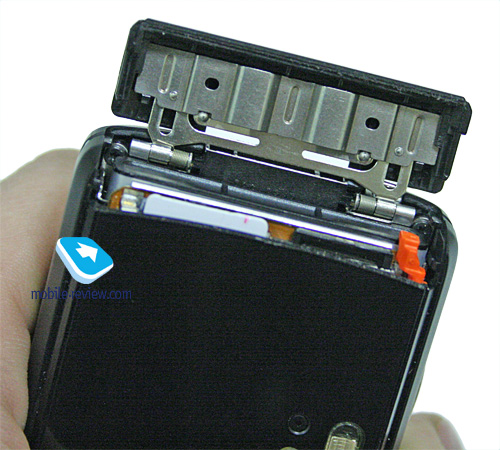
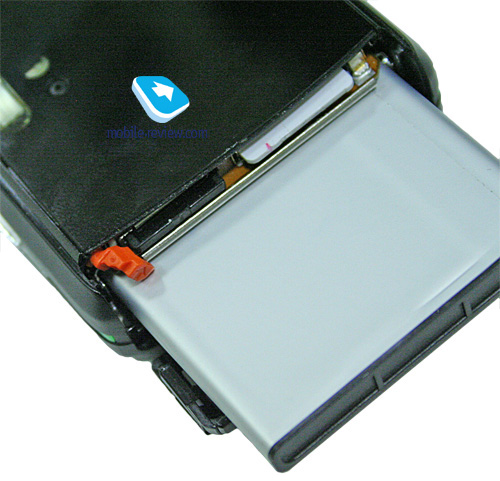
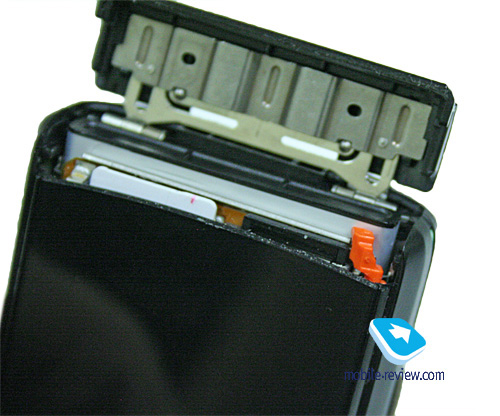
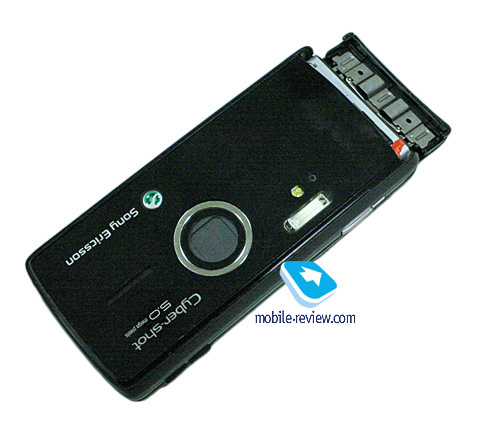
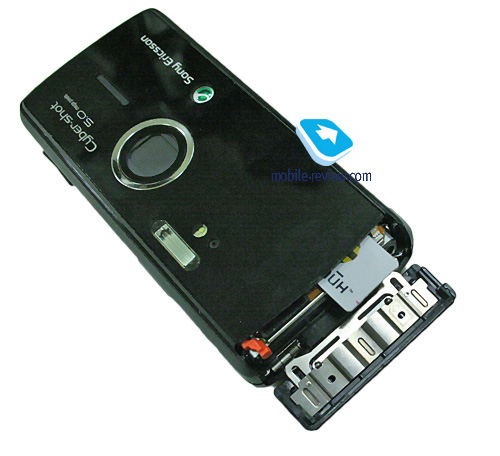
This design is particularly convenient, as it makes for one touch availability of the memory card slot, providing hot-swap ability. At that you will never need any kind of adapters to insert any of the two supported card types – the slot deals with them right out of the box.
The handset’s display slightly outdoes that found in the Sony Ericsson K790i/K800i, measuring 2,2 inches from corner to corner (previously – 2 inches). The QVGA (240x320 pixels) allows it to accommodate up to 8 text and 3 service lines, but with smaller fonts you can squeeze more lines into it. Like before, this screen displays up to 262K colors (TFT) and has a mirror layer, which does help it get along with direct sunlight and increases viewing angles.
Similarly to the Sony Ericsson T650i, this handset enjoys mineral glass protecting the display which has three touch-sensitive zones beneath it (like the Motorola RAZR2 V8), where you will find context-sensitive buttons. With this solution, they have shaved off one row of buttons, so that now OK and two soft-keys are touch-sensitive, you will face no problems with managing them, and moreover, like in all previous models, actions they perform depend on the menu you are in. An interesting approach that will leave a lot of leftover space on handsets in future and make for bigger numeric keys.
The handset comes equipped with a motion sensor, but unlike the previous offerings (W710i, W580i) it is used not as a pedometer, but rather for determining display layout – while viewing photos or videos in the Gallery, turning the handset sideways automatically switches the screen into landscape mode. As of today, only Apple’s very own iPhone can boast similar option on this spec sheet. Further on, the inbuilt sensor engages in a number of stock games, specifically, this phone comes preinstalled with one.
The battery utilized by the K850i is also an all-round new type – 950 mAh Li-Pol unit (previously 930 mAh). The manufacturer rates battery life for 400 hours in standby and 9 hours of talk time. In conditions of Moscow networks, this cell will keep the phone up and running for about 2 days on average use – it is not much different from the Sony Ericsson K800i.
Camera. The maker was setting off to achieve maximum possible resemblance between Cyber-Shot’s range flagship and digital compacts. That is basically why the right-hand side now features a stand-alone camera shortcut button, shutter key, while the volume rocker still stands for zoom whether you are shooting or browsing snaps. Among all these novelties is a slider key that allows you to quickly jump between still image, video recording and photo viewing modes – with this onboard, extra buttons for accessing the gallery, like in the Sony Ericsson K800i (A-B) are no longer required.

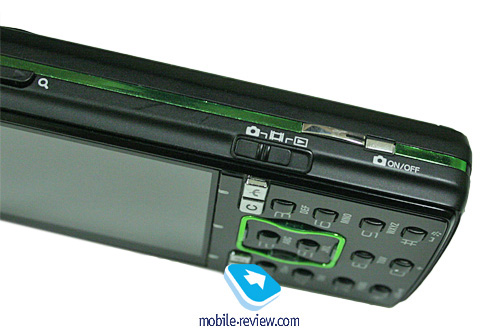
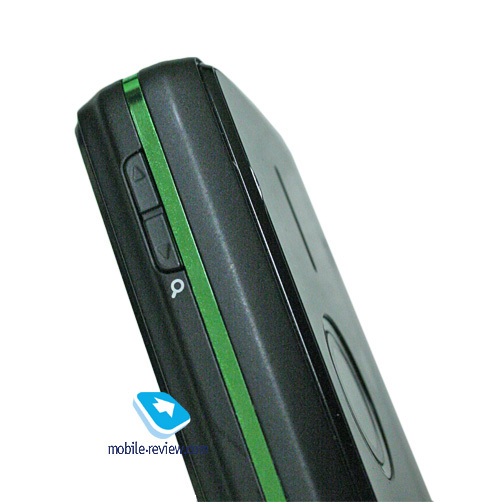
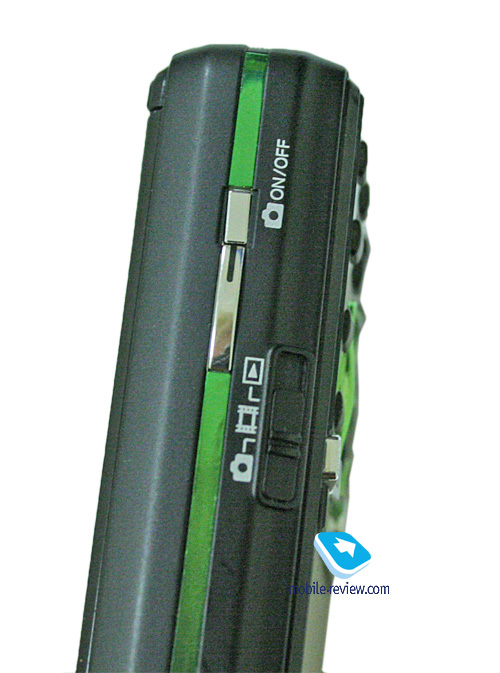
The camera’s lens itself takes up residence on the rear, being covered with a shutter, yet physically it is located under the back cover’s plastic. All concerns about the plastic picking up scuffs, scratches, which will inevitably lead to worse imaging experience, are groundless, as I see it. However, you will still have to remove smudge and grease from the surface regularly.
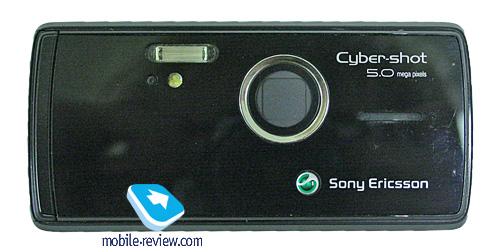
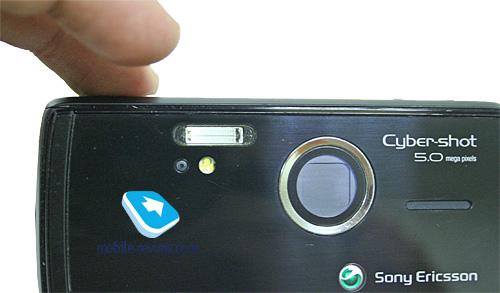
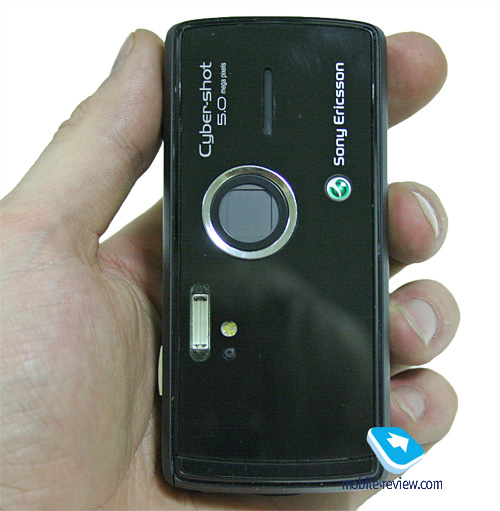
Apart from its big 5 Mpix CMOS sensor, the camera also boasts Xenon flash, which doesn’t make any difference from the Sony Ericsson K800i, marginally increased power aside. Video recording resolution – QVGA at 30 frames per second.
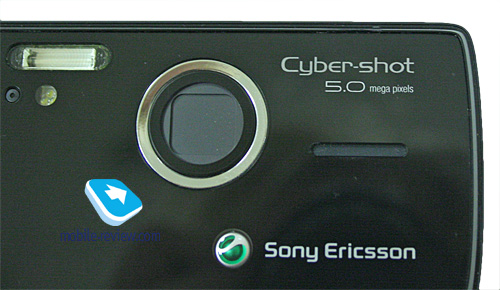
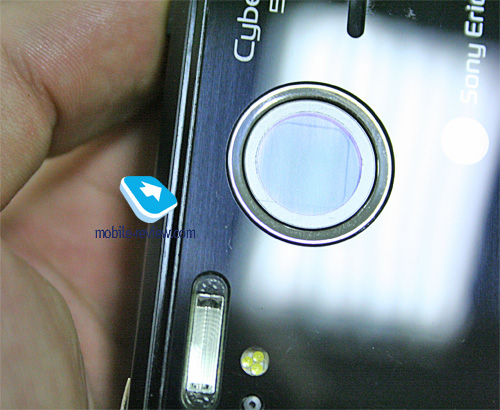
The camera interface is almost no different from the one the Sony Ericsson K800i has, the only big difference are the samples displayed when choosing shooting mode (for example in Portrait mode you will see a girl’s face) – seems like a tiny detail, but on the other hand this is what digital compacts have as well.
Listing extra settings we can’t overlook sensitivity adjustment, there is also BestPIC mode speed settings (fast or normal), which makes it a sort of Sport mode. Much like the Sony Ericsson K810i, there is PhotoFIX feature that allows enhance brightness and contrast for the taken shot – these are some kinds of filters than can be applied with the inbuilt PhotoDJ editor.
Moreover, the handset has blue marks next to the right low of numeric buttons, which control shooting mode and flash – just like in the Sony Ericsson K810i. But most of the time you will be interacting with the camera’s menu via the touch-sensitive buttons.
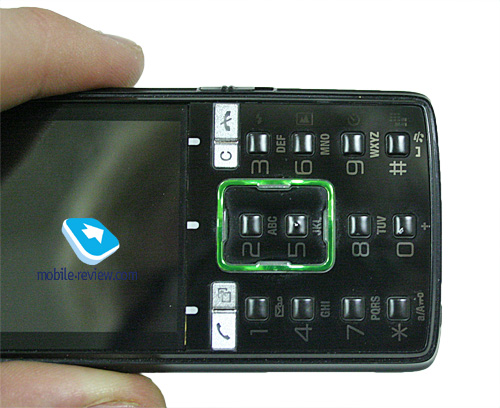
Technically, the camera of the K850i will be in line with the Sony Ericsson K810i, but will come in with increased resolution – don’t expect the camera module to get substantially better by the time this handset starts shipping, though.
Media. Much like Nokia’s smartphones, this handset features Media section, comprising both photo and video and allowing you to view these two types of content via a very player-like interface. Video can be added to blogs from this section as well. When starting up a slideshow, you can select light effects to accompany it (Rhythm&Lights). For the very first time, the handset sports Photo Tag function, which enables searchable captions for snaps. This feature complements the ability to make up various albums, which was previously represented by Timeline View.
Walkman 3.0. Even though this is obviously an imaging-minded phone and the company doesn’t normally embed latest player version in non-Walkman products, the flagship is this rare exception – we will present you with lowdown on the new Walkman player version in the review of the device, and for now let us highlight new main menu layout, which appears to be styled after Sony PSP and among all other things, now you can quickly compose own playlists.
New functions include Rhythm&Lights, which stands for keypad-based light effects rhythm-keyed with tunes you are listening to – the Sony Ericsson T650i has this feature implemented in the same way. Unlike the K800i, the player here supports TrackID. Upon USB connection you can make use of MTP-protocol, in other words Windows Media Player 10 or 11.
Speaking of major drawbacks, that set this handset apart from Walkman-branded solutions, is the missing dedicated music button (which was embedded in the K800i) and sub-par plastic headphones in the box.
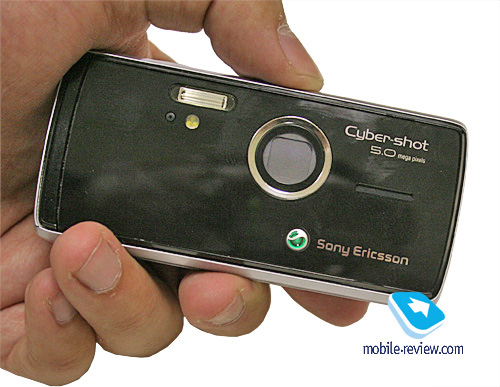

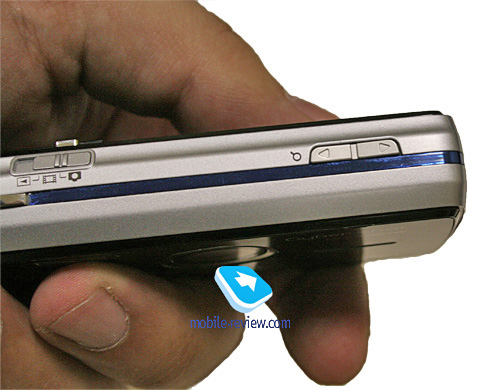

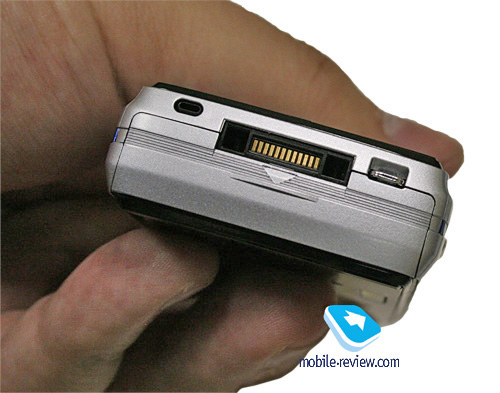
Other changes. The handset fully supports both EDGE and UMTS connectivity, including HSDPA. Although it doesn’t come with Infrared port, this connectivity potion is slowly dying off today. The Flight Mode profile now allows using Bluetooth when activated; DRM has got updated to version 2.0. The K850i also boasts support for Microsoft Exchange ActiveSync which makes for Push Mail and remote device’s PIM information wiping. The e-mail client can’t work with folders.
Smart Search – matches the feature utilized by Samsung, when dialing a number from the standby screen, the handset offers you recent numbers or contacts from the phonebook.
Handset’s platform. In the previous article we unintentionally confused our readers, saying that the phone builds upon A100 platform (A1 and A100 software part). Though it is yet to be decided, but it looks like the handset employs A2 platform and its software iteration – A200 (if you have any information on this to share we will be glad to listen to it).
Outlook. The K850i starts shipping in October at the price of about 700 USD. This particular model looks pretty good as the company’s flagship and definitely attracts attention. At the moment nearly each and everyone puts it head to head with the Nokia N95 as the only mass-market device carrying 5 Mpix camera onboard. To me, this makes a little sense in view of different form-factor, and after all, the Nokia N95 is a smartphone. At the same time, Nokia N82, which hasn’t been announced yet, may qualify as the competition for the K850i, shaped in candy-bar form-factor, having a 5 Mpix camera module, and offering built-in GPS-receiver, Wi-Fi connectivity, and again, smartphone functionality. These two products will have comparable price tags, which automatically makes them adversaries on the market.
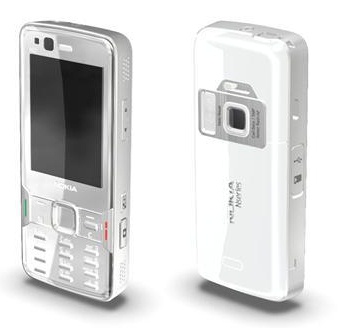
Keeping in mind the release of the K800’s designer edition, namely the K810i, the same story might repeat for the K850i as well. In six months or so, we might see a model with smoothened edges and more airy looks to it. Probably, some specifications will get revamped; however there is still no clarity on this question.
It is important to realize that this is an interesting flagship product that will generate a lot of hype. With direct competitors on the market, the handset’s price will change in a dynamic manner for Sony Ericsson no longer has that degree of freedom it enjoyed several years ago. Indeed, Nokia has spotted the company’s product and now seriously considers it as a rival and accordingly rolls out own solutions that must stand up to Sony Ericsson’s products. And we, consumers, couldn’t be happier with this, as competition shapes up offerings, making them better overall.
Sony Ericsson W910i (Shinobu)
The company has come up with “Sophisticated playfulness” slogan for this slider. Technically, the W910i matches the Sony Ericsson K850i’s in terms of filling; however there are still some differences to take note of. Since it is a music-driven offering, the company has armed it with its stock 2 Mpix camera with no autofocus. Aside from this, another thing characterizing the W910i is its size - 99.5x50x12.5 mm, weight 86 grams, which are quite decent dimensions for a UMTS phones, further on, it’s nearly beyond competition in this aspect these days. But if you are not into UMTS connectivity, the Samsung U600 might be the way to go.
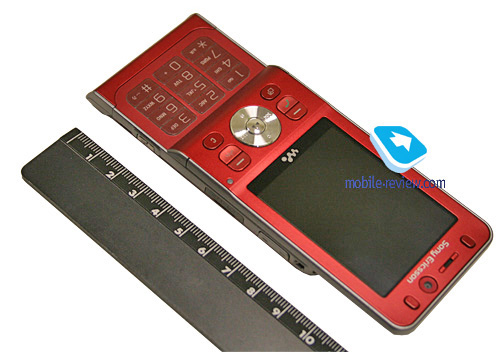
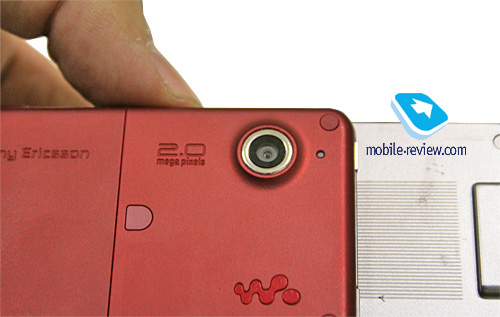
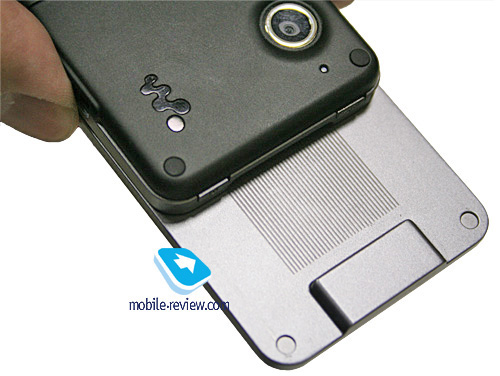
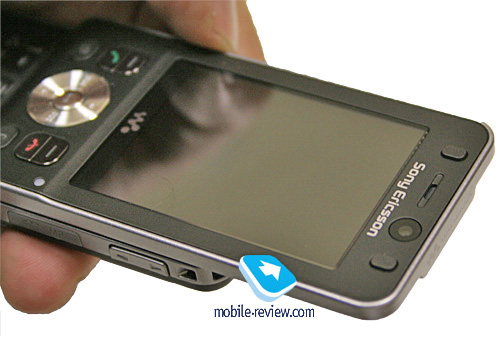
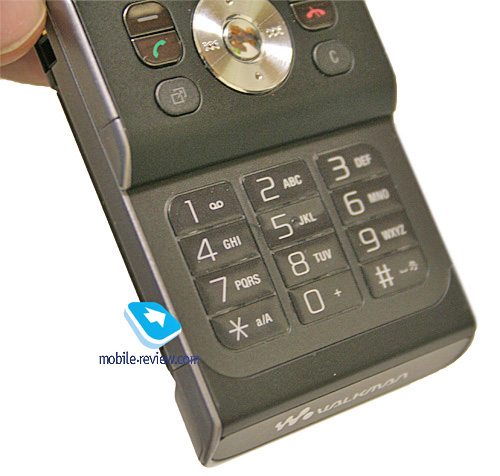
While somewhat rectangular, the handset’s design still has some charm to it. The plastic seems to be of fine quality throughout the casing, saving for, maybe, the numeric buttons, that don’t belong on the device. The W910i is available in a choice of two colors - Hearty Red and Noble Black.



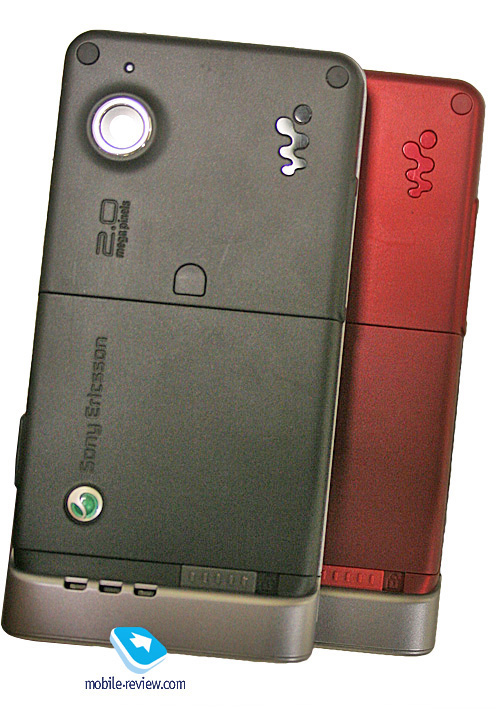
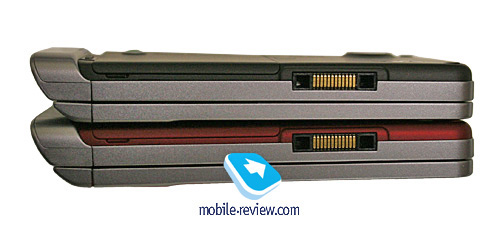


Among things that seemed interesting to us, we should probably point out the battery cover latch, but that’s about it. The manufacturer has kept A-B keys topping the display, as they do just the same thing as on the Sony Ericsson K800i.
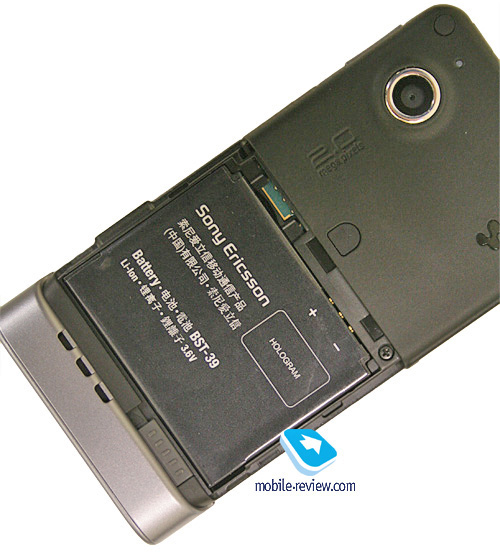
The model makes use of a QVGA display measuring 2.36 inches diagonally (against 2.2 inches of the K850i). Despite standard BST-39 cell (920 mAh), continuous music playback time has grown up to 20 hours.

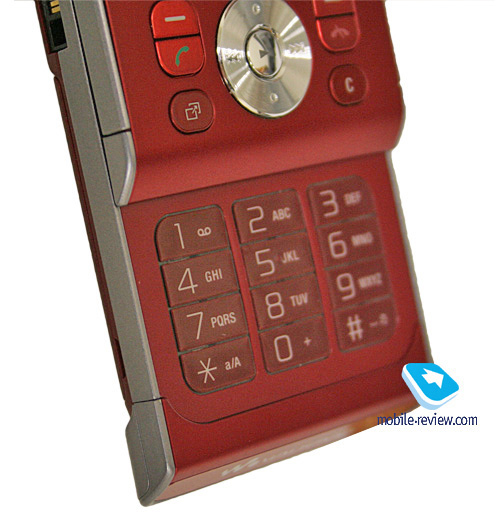
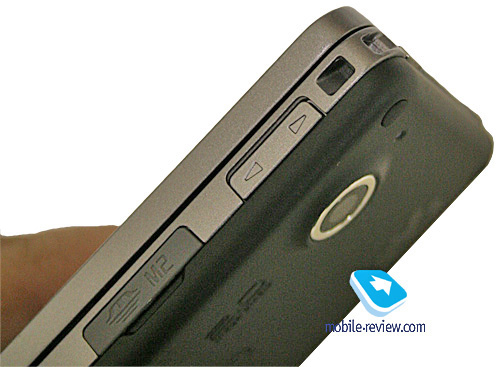
The built-in motion sensor, for the most part, is used for music player management – shaking the handset back and forth initiates random playback mode, pushing the phone rightwards jump to the next text, leftwards – go one track back. The previous models could boast nothing of this kind – for example, the Sony Ericsson W580i could only turn shuffle on.
An interesting trait of the device is SensMe technology that comes built into Walkman 3.0 player – with this, you just need to pick a tune that fits your mood best, and then the handset will draw a playlist with similar tracks on its own. This means that you literally need to settle back and enjoy how the handset analyzes all tracks without your help.
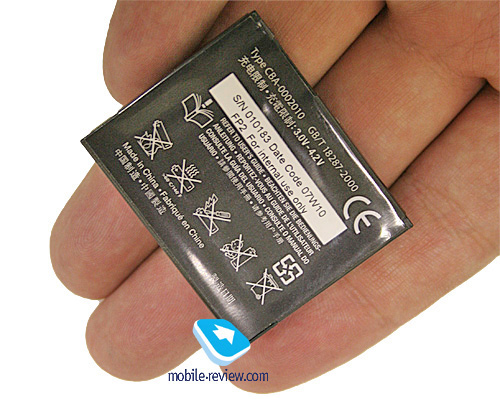
The model arrives in the market in October as well at the price of around 550-600. This is by no means “a few coins”, but the market hasn’t seen too many of similar offerings, so it might actually become sought-after within its price-bracket. The major struggle will start between this device and Samsung’s offerings.
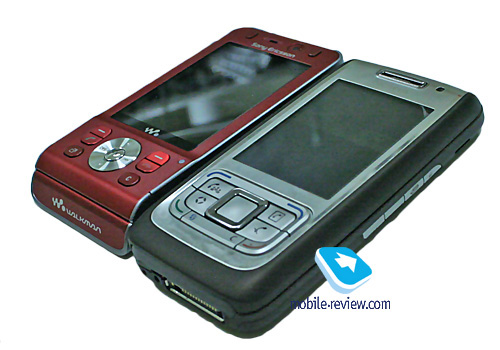
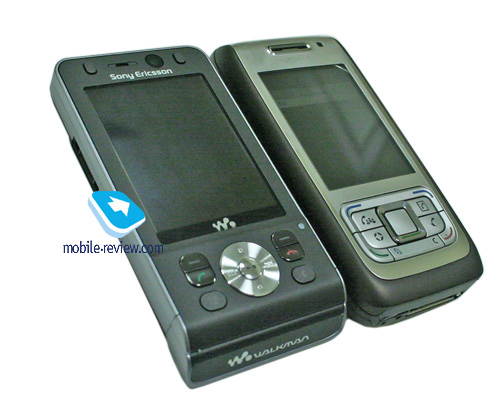
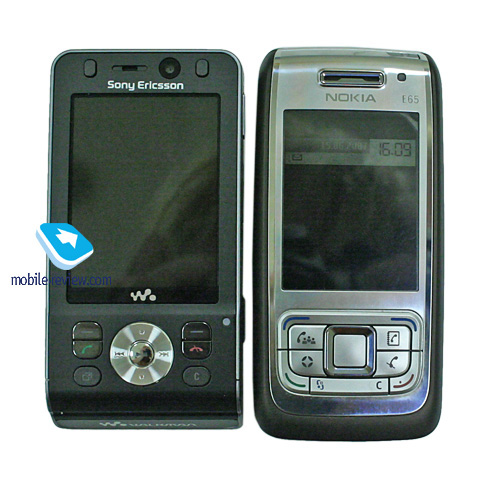

Sony Ericsson W960i
Music edition of the Sony Ericsson P1i, nothing special about this handset. It carries 8 Gb storage onboard, comes packed with stylus, Walkman 3.0 player, but you might also want to try wandering around the handset without stylus – with fingers along (like in the W950i). I strongly recommend that you read the review of Sony Ericsson P1i, to get an idea of what this phone really is.
With shipments start scheduled for October, the W960i will go for about 800 USD.
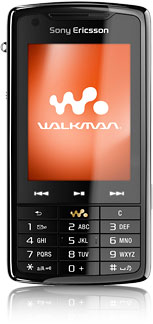
Sony Ericsson K530i
Curiously, the UMTS-edition of that Sony Ericsson K550i is dubbed as a junior model by the maker. Both in the sense of hardware and software these two are identical, so we won’t pay close attention to the spec sheet and will rather redirect you to the respective review on our site.
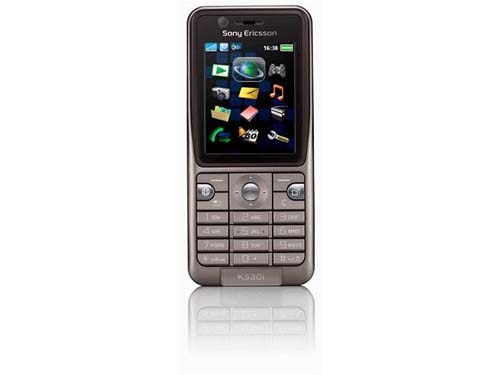
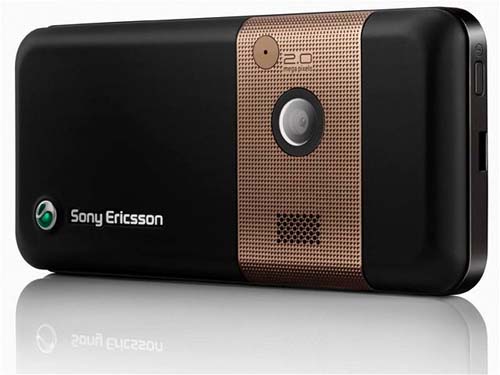
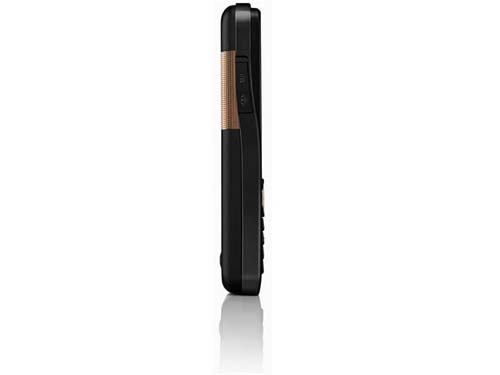
Sony Ericsson Z320i/Z250i
Two clamshells for women with scant functionality, yet appealing design and event icons on the front, which make up for the missing outer display. Priced at 140-200 USD both models are fetching enough, yet nothing out of the ordinary.
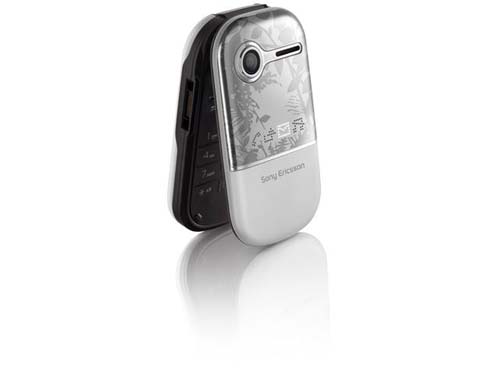
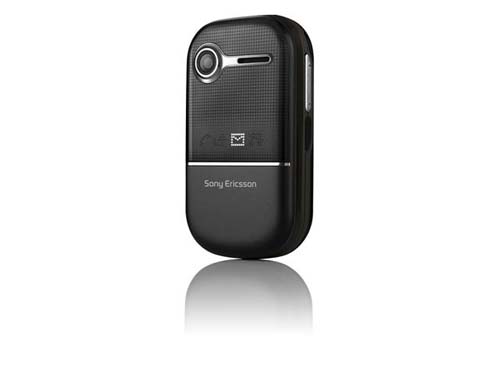
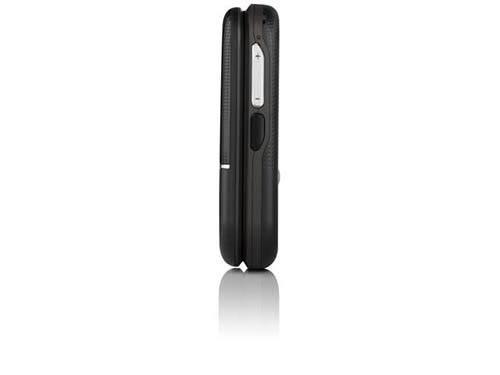
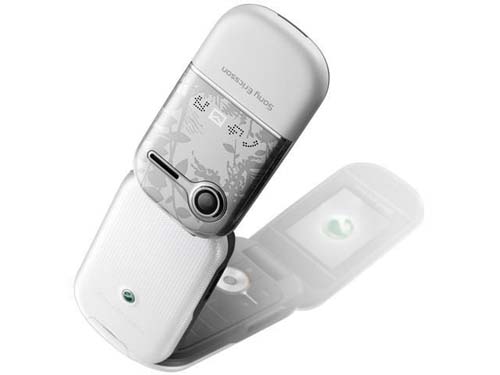
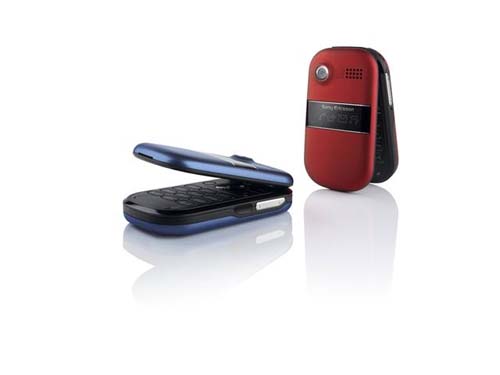
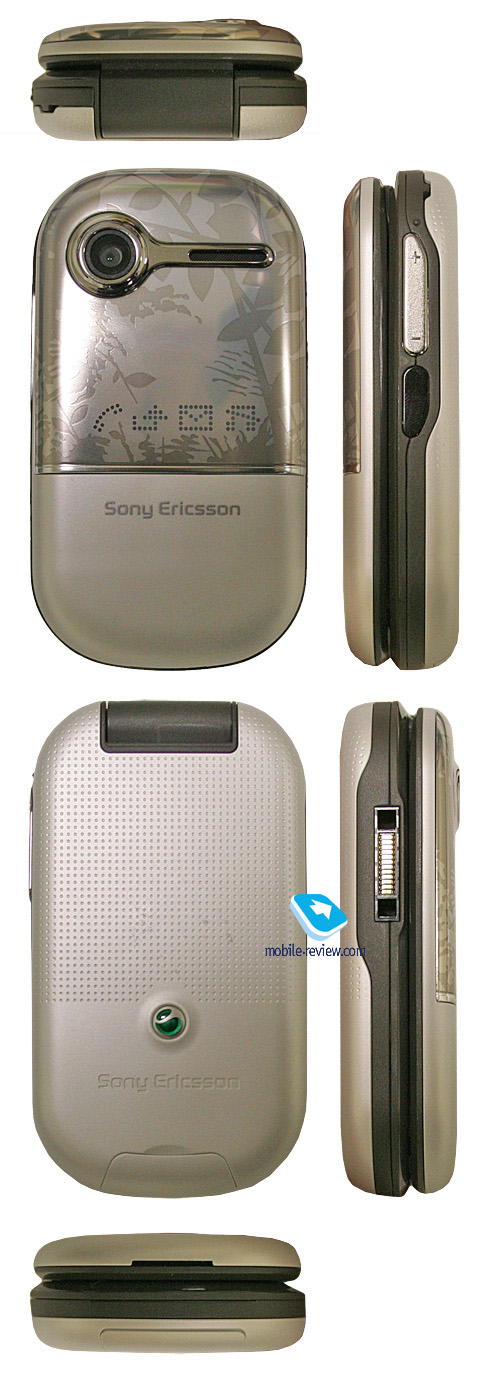



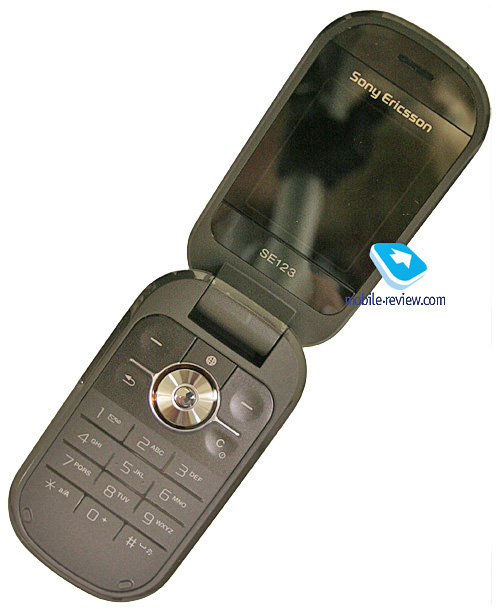



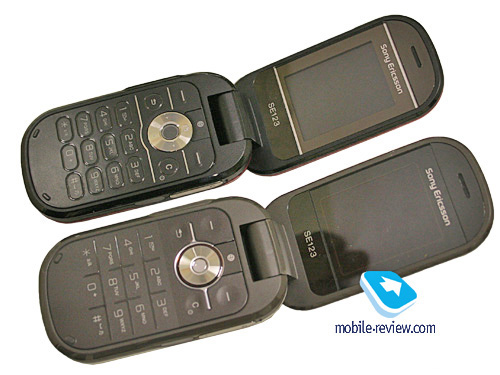


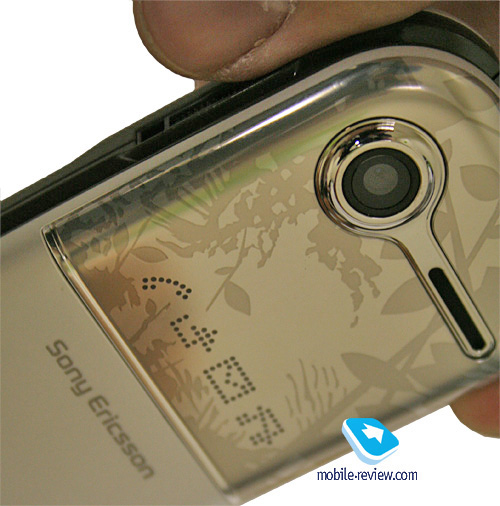


Accessories
We will be looking into each of the presented accessories later; therefore here I would rather focus solely on the HGE-100 here, a headset that comes with a GPS-receiver inside. One of the foremost draws is that it drains juice from the handset’s battery; the list of supported devices features all contemporary offerings of the company, and on top of that, it instantly adds Sport Tracker application (like in the Sony Ericsson W580i). While this solution will retail for about 150 USD, it looks quite reasonable against the backdrop of other external GPS-receivers, albeit quite pricey.
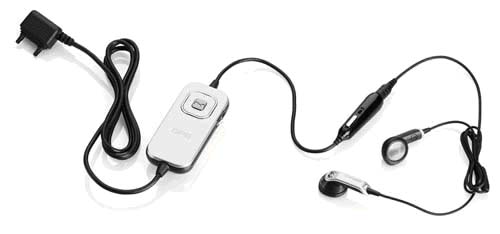
Related links:
Eldar Murtazin (eldar@mobile-review.com)
Translated by Oleg Kononosov (oleg.kononosov@mobile-review.com)
Published — 20 June 2007
Have something to add?! Write us... eldar@mobile-review.com
|
News:
[ 31-07 16:21 ]Sir Jony Ive: Apple Isn't In It For The Money
[ 31-07 13:34 ]Video: Nokia Designer Interviews
[ 31-07 13:10 ]RIM To Layoff 3,000 More Employees
[ 30-07 20:59 ]Video: iPhone 5 Housing Shown Off
[ 30-07 19:12 ]Android Fortunes Decline In U.S.
[ 25-07 16:18 ]Why Apple Is Suing Samsung?
[ 25-07 15:53 ]A Few Choice Quotes About Apple ... By Samsung
[ 23-07 20:25 ]Russian iOS Hacker Calls It A Day
[ 23-07 17:40 ]Video: It's Still Not Out, But Galaxy Note 10.1 Gets An Ad
[ 19-07 19:10 ]Another Loss For Nokia: $1 Billion Down In Q2
[ 19-07 17:22 ]British Judge Orders Apple To Run Ads Saying Samsung Did Not Copy Them
[ 19-07 16:57 ]iPhone 5 To Feature Nano-SIM Cards
[ 18-07 14:20 ]What The iPad Could Have Looked Like ...
[ 18-07 13:25 ]App Store Hack Is Still Going Strong Despite Apple's Best Efforts
[ 13-07 12:34 ]Infographic: The (Hypothetical) Sale Of RIM
[ 13-07 11:10 ]Video: iPhone Hacker Makes In-App Purchases Free
[ 12-07 19:50 ]iPhone 5 Images Leak Again
[ 12-07 17:51 ]Android Takes 50%+ Of U.S. And Europe
[ 11-07 16:02 ]Apple Involved In 60% Of Patent Suits
[ 11-07 13:14 ]Video: Kindle Fire Gets A Jelly Bean
Subscribe
|
















































































